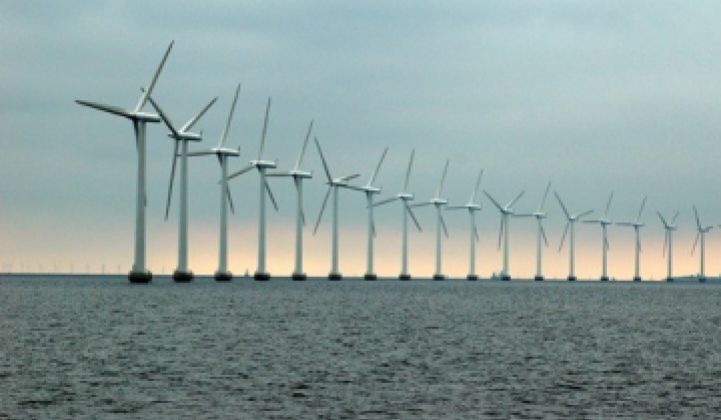Opponents of Cape Wind, the still-embattled herald of offshore wind in the U.S., have raised an array of unsubstantiated objections, but the project continues to move toward construction.
Objections to the high price that New England utility National Grid agreed to pay for Cape Wind’s electricity were discredited when, in its approval of the power purchase agreement, the Massachusetts Department of Public Utilities said it "is abundantly clear that the Cape Wind facility offers significant benefits that are not currently available from any other renewable resources. We find that these benefits outweigh the costs of the project."
Another claim is that the Siemens 3.6-megawatt offshore turbine that Cape Wind’s developers have contracted for has a record of malfunctions.
The claim, reported Henrik Stiesdal, the Chief Technology Officer for Siemens Wind Power, is thought to have stemmed from a bearing corrosion issue long ago detected during normal maintenance and rectified, before there was any malfunction or loss of production.
Siemens, Stiesdal recounted, built the world’s first offshore wind farm in 1991. From the beginning, corrosion was a concern the company attacked as it adapted onshore machines to the harsh, wet, salty ocean environment. At the end of the 1990s, after nine years of pilot project trials, “we built the next offshore wind farm with megawatt-range turbines off the coast of Copenhagen,” Stiesdal said. “It is the one you see pictures of, where the turbines are in a row that is curved.” It was for that project that Siemens introduced “condition monitoring systems on all the key components,” Stiesdal said.
By 2001, Siemens was building a 2.3-megawatt turbine specifically intended for offshore. It was thought at the time to be too big to ever be used on land, Stiesdal remembered, and then added, “That machine later became our onshore breadwinner. Almost all the machines we have installed the last six years in the U.S. are 2.3s.”
The 3.6 design, Stiesdal said, was based on over a decade of experience. “The prototype was installed in November 2004,” he said, and “has been running for slightly more than six years.” A second prototype and twelve pilot turbines followed, all of which provided operational data assessed by Siemens before it started production line manufacturing in 2008.
“The performance of these machines is extremely good,” Stiesdal said, answering the malfunction allegation. “But we have had one case of a corrosion issue.” It occurred in the first twenty-five offshore machines they installed. “We had some corrosion on the pitch bearings,” he explained.
The company attacked the issue head-on. “We simply went out and replaced all the bearings. We did not have any failures or production stops,” Stiesdal said. “There were deficiencies in the corrosion protection from the supplier,” he added. Once the issue was detected, Siemens took steps to ensure “that any bearings made from then on would have proper corrosion protection.” It also implemented supplementary corrosion protections.
“We did what I would hope any prudent seller of equipment would do,” Stiesdal said. “We discovered something and then we went out and corrected it with our own money, on our own accord without the customer requesting anything,” he said. “But it’s always a good story if the market leader has to do anything, no matter how preventive or proactive.”
There have, of course, been incidences of individual turbine malfunctions. “It is unavoidable, when you make a lot machines, that every now and then a supplier will have a problem,” Stiesdal, who has been in the wind turbine business since the mid-1980s, said. “We speak about reliability and availability,” he explained.
Availability is Siemens’ measure of the time a turbine is available as a percentage of the total hours in the year. Reliability focuses on downtime hours lost to unscheduled operational events. Availability is a more rigorous measure because it includes the hours lost to “normal scheduled maintenance,” which, Stiesdal said, “is about one percent of the hours in the year.” So, he added, “if we have 97 percent availability, we have 98 percent reliability.”
“The availability of these machines over the last two years is something on the order of 97 percent,” he said. “And you don’t have an availability of 97 percent,” he added, “if you have a machine that is not performing.” Regarding allegations of poor performance by the 3.6 turbine, Stiesdal concluded, “The facts of the matter do not support such an interpretation.”
There is much prognosticating in the wind industry about huge turbines for the offshore environment. Several companies are designing ten-megawatt machines and Gamesa is leading a consortium of eleven companies in the cooperative design of a fifteen-megawatt turbine.
Stiesdal jokingly recalled that when he was working on a 150-kilowatt turbine in 1985 and there was speculation about turbines larger than 250 kilowatts, he doubted the possibility. He then went on to say that Siemens now has a six-megawatt turbine “in the pipeline” that “will go up this year.”
In ten years, turbines with double-digit megawatt ratings will be commonplace, Stiesdal said. “Sooner or later, there will be physical barriers,” he said, “but earlier we predicted such thresholds would exist at much lower levels than where we are today.” The mistake “was not in the assessment of where we were, but in the assessment of how we would develop.”



